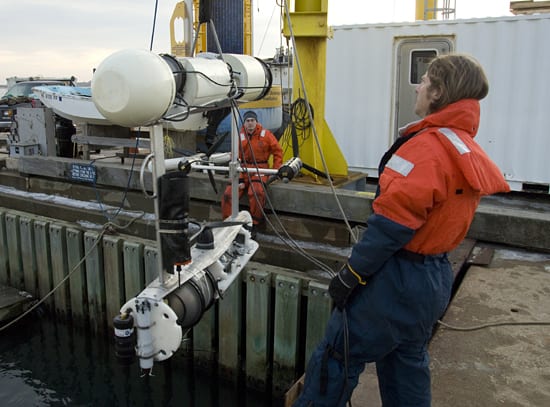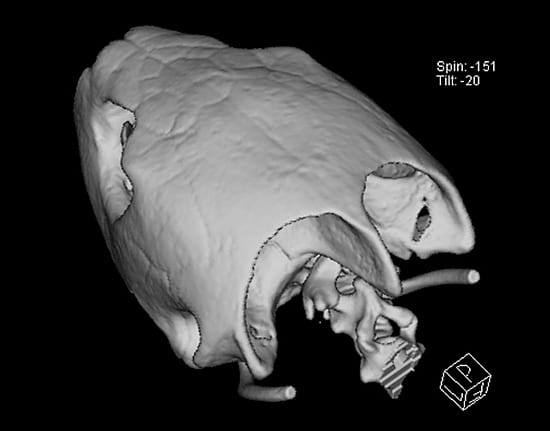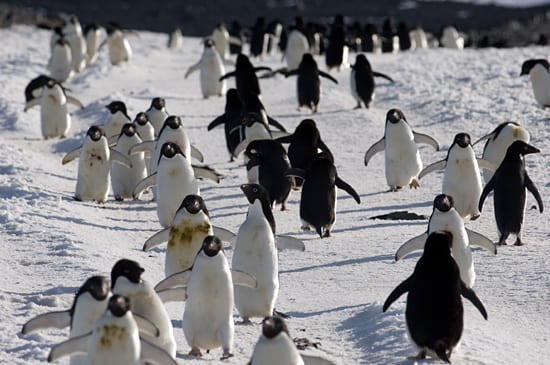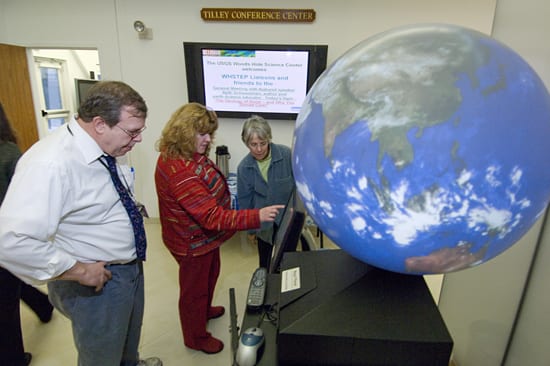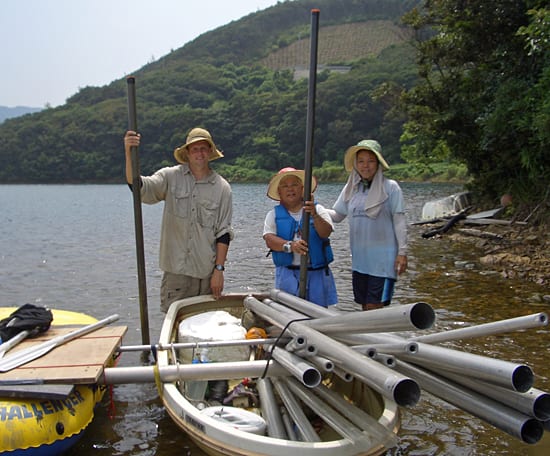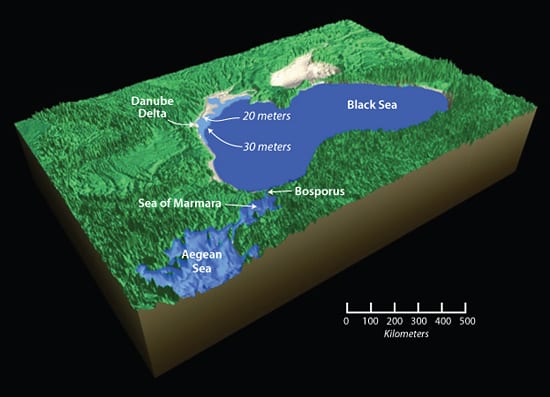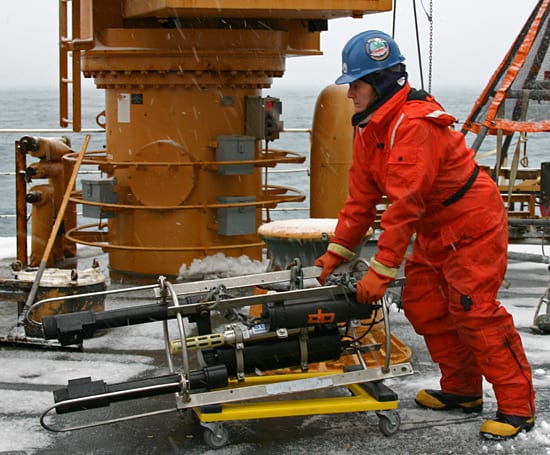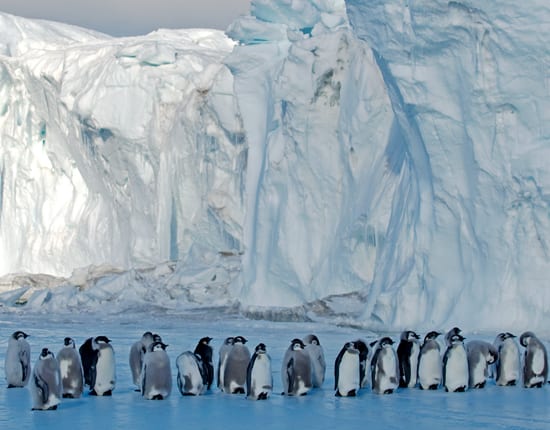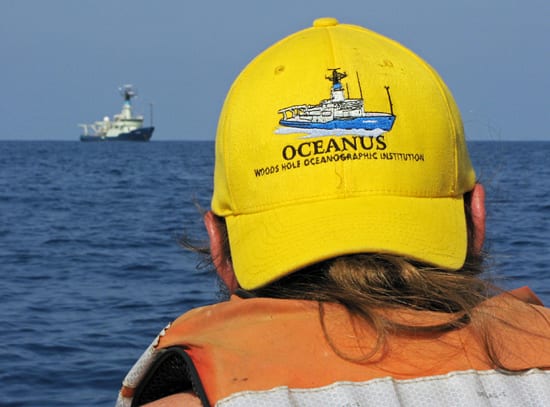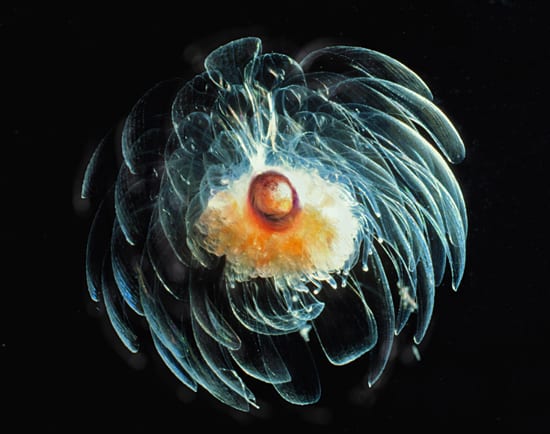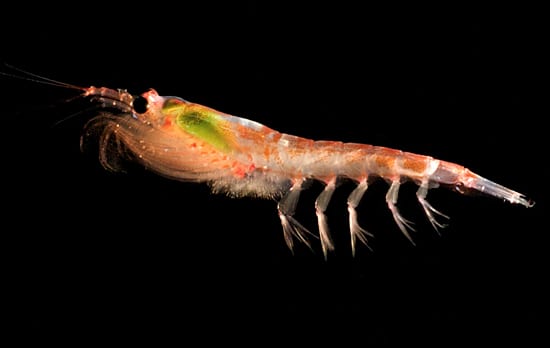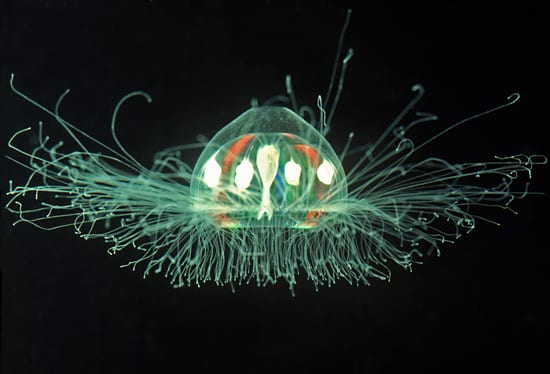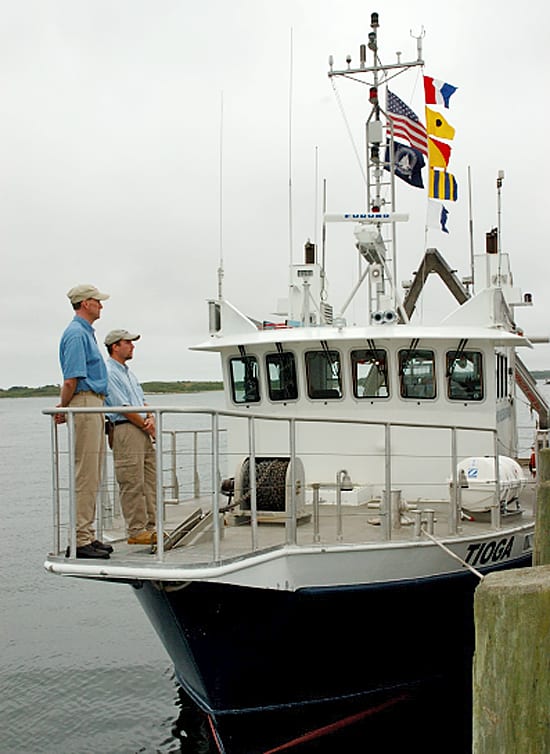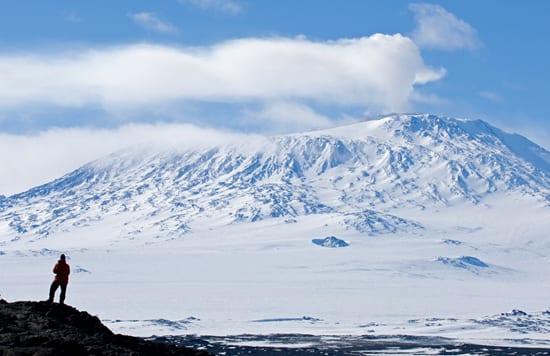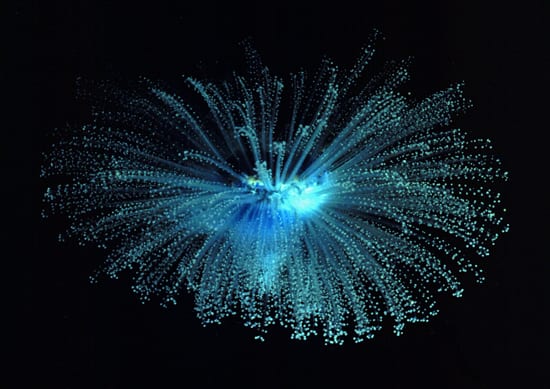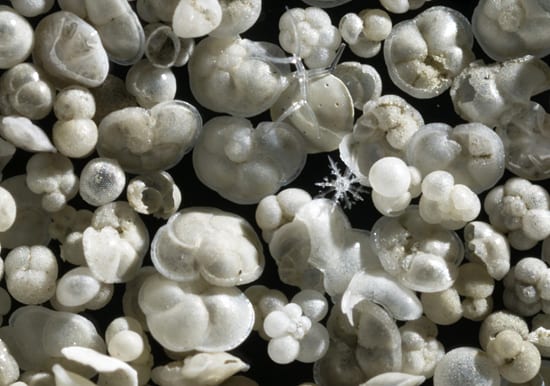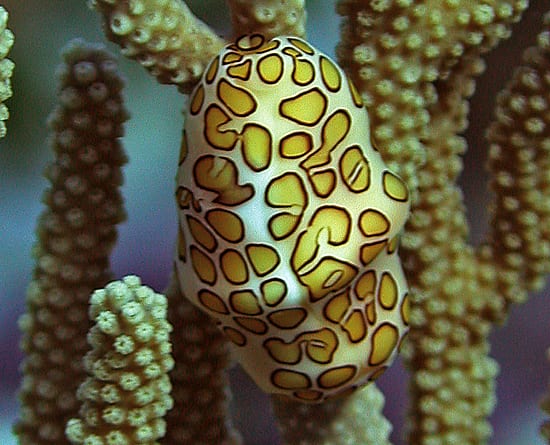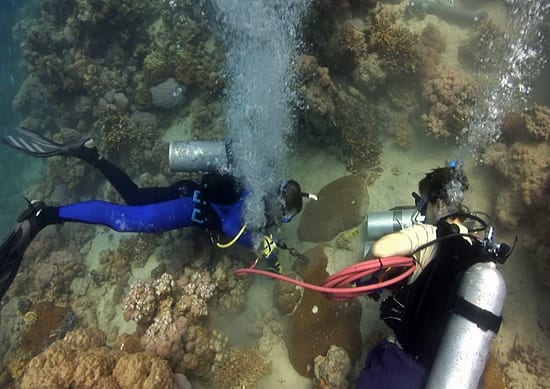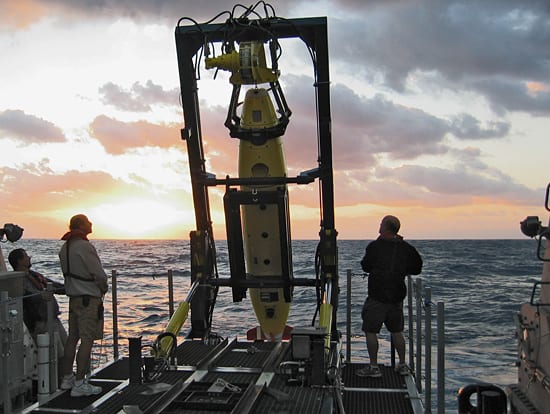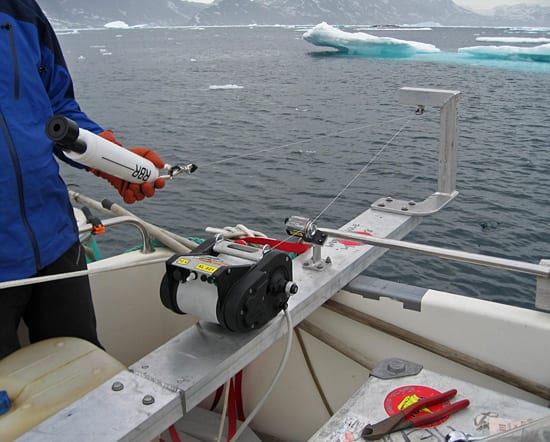Multimedia
Preparing for Hawaii
WHOI/MIT Joint Program graduate students Clayton Kunz (foreground) and Chris Murphy (background) test a newly-built SeaBED autonomous underwater vehicle (AUV) at the WHOI dock. Developed in Hanumant Singh’s Lab of…
Read MoreShock-resistant skulls
Scientists and engineers from WHOI and the U.S. Navy have discovered that sea turtles’ skulls and shells not only protect them from predators but also from extraordinarily powerful underwater shockwaves.…
Read MorePenguin passing zone
In Antarctica, where researchers study penguins, Main Street is a three-lane, 1-kilometer thoroughfare of snow smoothed to an even finish by the trampling of little penguin feet, wrote Hugh Powell…
Read MoreUpscale parking spot
At a pier between an immense cruise ship and a luxury yacht at the “Yacht Haven Grande” yacht club in St. Thomas, U.S. Virgin Islands, R/V Oceanus was “a little…different…from…
Read MoreA match made in academia
In 1968, the Massachusetts Institute of Technology and the Woods Hole Oceanographic Institution announced the creation of a joint program for graduate studies in oceanography. After 40 years together, the…
Read MoreIt’s a Magic Planet
WHOI Ocean Science Exhibit Center Manager Kathy Patterson uses the Magic Planet projection system to demonstrate global ocean processes to the attendees of the Woods Hole Science and Technology Education…
Read MoreFamily digs deep in Japan
Jon Woodruff, a recent graduate of the MIT/WHOI Joint Program, is interested in ancient bits of grit and shell that he pulls from lagoons and marshes using hollow metal tubes,…
Read MoreDanube Delta
Did a catastrophic flood of biblical proportions drown the shores of the Black Sea 9,500 years ago, wiping out early Neolithic settlements around its perimeter? Liviu Giosan, a geologist in…
Read MoreBering Sea spring
WHOI biologist Carin Ashjian wheels the Video Plankton Recorder (VPR) to the stern of the U.S. Coast Guard Cutter and icebreaker Healy in March 2008, preparing to deploy it in…
Read MoreMarching toward extinction?
Emperor penguins (popularized by the 2005 movie “March of the Penguins”) depend on sea ice for their daily lives — it’s where they breed, feed, and molt. These young emperor…
Read MoreSeeing double
From a small boat, while scouting for jellyfish, R/V Oceanus Chief Mate Ethan Galac took in views of the 177-foot ship. He and other crew members were helping scientists Larry Madin and Erich Horgan find…
Read MoreFlower of the deep
The deep ocean is home to hundreds of species with soft, jelly-like tissues. Many of these gelatinous animals are transparent, and many are beautiful. Siphonophores, such as the one pictured,…
Read MoreLaboratory and studio
MIT/WHOI Joint Program student Stephanie Waterman was interviewed about her research for an audio slide show produced by Ari Daniel Shapiro, a recent graduate from the Joint Program. Stephanie is…
Read MoreAntarctic krill
WHOI/MIT Joint Program graduate student Andrew McDonnell captured this image of an Antarctic krill during the first of two month-long cruises off of the West Antarctic Peninsula during the Austral…
Read MoreFragile predator
The jellyfish Crossota alba. Delicate jellyfish such as this thrive in the deep sea, where no wind, waves, or turbulence threaten to tear them apart, and are successful predators in…
Read MoreFoam, it’s not just for cups
WHOI engineer Rod Catanach shows off foam used to keep several deep sea vehicles buoyant, including Alvin and Nereus. It’s a durable, light-weight material; engineers use syntactic foam, a matrix of billions of…
Read MoreFront row vessel
Captain Ken Houtler and mate Ian Hanley stand on the bow of their vessel, the R/V Tioga, for a good view of the dockside press conference about WHOI’s role in…
Read MoreSnowy volcano
WHOI researcher and photographer Chris Linder gazes at 12,400-foot Mt. Erebus in Antarctica. This was a calm day at Cape Royds, during an expedition in 2007, “though as you can…
Read MoreBlue rays
Is it fireworks, a flower, or a 1970’s fiber-optics lamp? None of the above!—it’s a colonial ocean animal related to jellyfish, called Porpita porpita. The colony has radiating blue “tentacles”—really…
Read MoreShells reveal the past
Seafloor sediments are full of tiny, lovely shells of single-celled ocean organisms that lived, died, and sank to the ocean bottom, building up in layers over the ages. The fossil…
Read MoreBeautiful but destructive
A Flamingo Tongue snail crawls over soft corals in the Caribbean. In an “arms race” over evolutionary time, the corals developed toxins that deter predators, but the snail evolved a…
Read MoreDrilling in the deep
WHOI post-doctoral researcher Neal Cantin (left) and MIT/WHOI Joint Program student Casey Saenger (right) collect tissue samples from a Diploastrea coral near a Red Sea cement plant. Cantin and other…
Read MoreUP AND AT ‘EM!
Members of the CATALYST ONE expedition team prepare for a sunrise launch in December 2008 of one of two 6,000-meter autonomous underwater vehicles (AUVs), owned by the Waitt Institute for Discovery.…
Read MoreWorking among icebergs
Are warmer ocean waters affecting Greenland’s ice sheet? To find answers, WHOI scientists this fall made use of a local, small vessel able to navigate the iceberg-filled waters of Sermilik…
Read More
